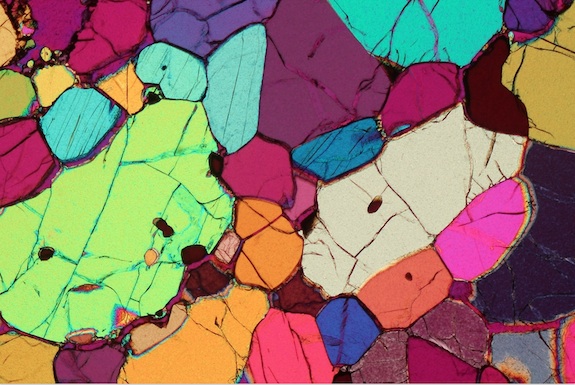These Thin Sections of Rock Look Like Beautiful Stained Glass
The beautiful MicROCKScopica project was created by Bernardo Cesare, a professor of petrology and a photographer, who combined his talents in an absolutely stunning way
Scientific American’s Symbiartic blog is celebrating the month September with a new piece of science art every day.
They just highlighted the beautiful MicROCKScopica project, a website created by Bernardo Cesare. Cesare is a professor of petrology at the University of Padova, Italy, and a photographer, who combined his talents in an absolutely stunning way.
Cesare’s images are photographs of thin sections (just 0.03 mm thick) of rock illuminated with polarized light. Geologists regularly use polarized light to look at thin sections under a microscope, usually to figure out what kinds of minerals constitute the rock.
The image above is of a rock called peridotite. “Peridotite is (volumetrically) the most important rock on Earth as it constitutes its mantle. But we don’t find much as there are some kilometers of crust on top!” Cesare said in an e-mail.
The mantle makes up a substantial portion of the interior of the Earth, but geologists have a hard time observing it directly. It’s too deep to take samples, so scientists must make due with the few bits and pieces that make their way to the earth’s surface. (At least until they can drill that far.) But by studying rocks like this one, found in Hungary, scientists can get a better idea of the inner workings of the Earth.
Also, it looks cool.
More from Smithsonian.com:
